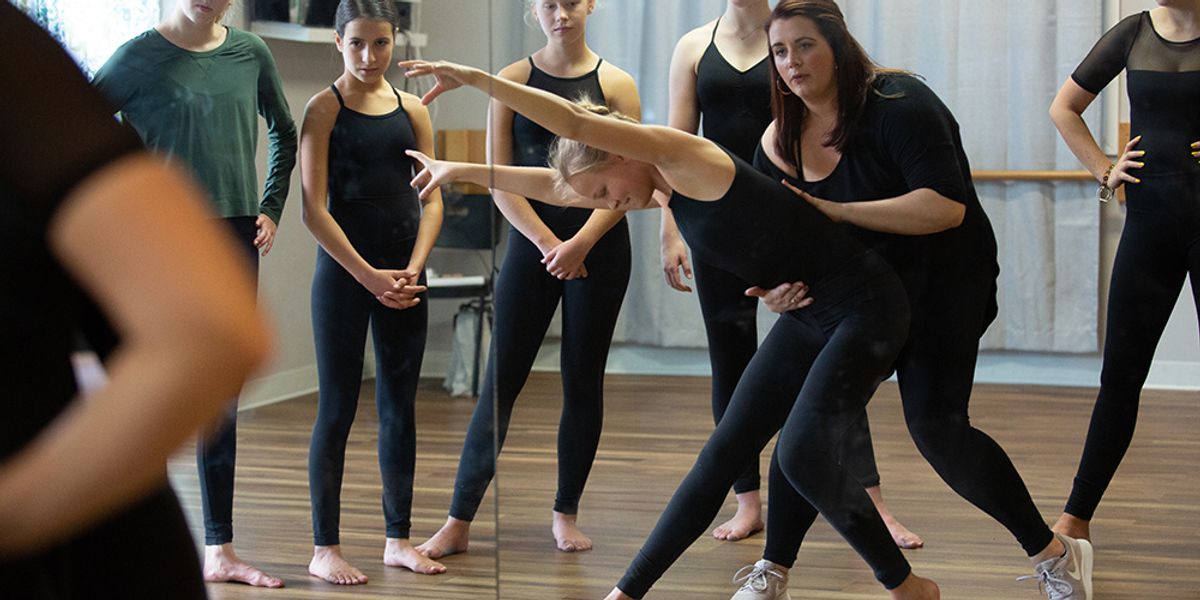These 5 Breathing Tips Will Transform Your Dancing
If a teacher or choreographer has ever commented that your dancing looks stiff, the problem could be that you aren’t breathing effectively. “When dancers aren’t breathing, their shoulders are up and there’s no length in their movement. They start to look like they’re just waiting to get to the next thing,” says Maria Bai, artistic director of Central Park Dance in New York.
It may seem like a no-brainer—of course you can’t move without breathing. But beginning dancers often hold their breath because they are so focused on picking up choreography, says Sarah Skaggs, director of dance at Dickinson College. Even advanced dancers can benefit from focusing more on their breath. “Sometimes they are paying so much attention to what their limbs are doing that they forget about the lungs, the chest, the trunk. Breath is the last thing they’re thinking about, but really it should be the first,” says Skaggs. The more integrated your breathing is, the more relaxed and present you will feel.
Practice Breath Integration

Learning to connect breath with movement starts before you even begin tackling phrasework. Lauren Sanford, director of jazz, lyrical and contemporary at Image Studio of Dance in Washington, incorporates Graham-style contractions into her warm-up so her students can feel the relationship between breath and movement. She also has them lie on the floor, take deep, slow breaths and imagine that they are sending that breath to different parts of their bodies. This can help dancers think of breathing as an action that involves the whole body, not just the chest and lungs.
Bai suggests dancers take yoga to work on breath control. “Yoga makes you consciously focus on your breath, and eventually that becomes a pattern you can find when you’re dancing,” she says. Similarly, New York City–based Lindy Fines, artistic director of GREYZONE and certified Pilates instructor, finds that Pilates’ focus on coordinating breath with every movement can help dancers breathe fully and use inhales and exhales to facilitate specific types of movement.
Time It Strategically

Even with plenty of practice, difficult or unfamiliar choreography may leave you struggling to integrate breath. If this is the case, try choosing specific points in a phrase where you will breathe. “When you’re doing an adagio, port de bras or waltz, there are places to inhale and elongate,” says Bai. “It’s harder in fast phrases. In those situations, transitions are where you can find your breath.”
Get Comfortable with Panting

Dancing will sometimes make you out of breath. Rather than fighting this, learn to work with it. Don’t try to cover up the fact that you are breathing heavily, says Skaggs; it only makes it more difficult to recover and bring in more oxygen. “Dancers have to learn to breathe deeply and continue without collapsing. If you’re calm about it, you can go further,” she says. She recommends training with activities like running, biking and swimming to get accustomed to breathing heavily and build your cardiorespiratory endurance.
Punctuate Your Movement

Using intentional, audible breaths can also be an aesthetic choice. “Breath adds dynamics and texture to your dancing. It can help you feel the difference between rough and smooth, staccato and sustained,” says Sanford. Try using breath to accent a sharp movement, or to elongate an extension.
When you’re dancing familiar choreography, you can insert these intentional breaths spontaneously to see how they might change your execution of the phrase. You can also choreograph breath, but be careful not to overdo it. “I see a lot of excessive breathers at competitions. If you’re forcefully breathing all the time, it makes the movement look robotic,” says Sanford.
Breathe as a Group

Being conscious of your breath is also a commonly overlooked way to connect with your fellow performers, especially in unison sections. “It’s really hard to move in exactly the same way as someone else. But if you match your breath, your initiation and follow-through will be the same,” says Sanford. “I love when I can hear a large group of dancers breathing together. It gives me goosebumps.”




